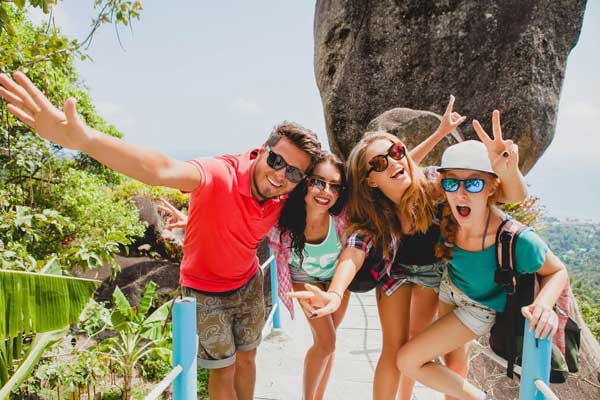Friday, July 8, 2022

The impact of the COVID-19 pandemic on the global tourism industry left not only tourism companies but also the tourism-driven economy in dire straits.
Shutdowns and travel restrictions led to the disappearance of international travel.
For example, China opened international flights after nearly two years on July 5, with India still not on the list of countries allowed to operate flights to the neighbouring country.
According to the World Economic Forum data, the aviation, travel, and tourism sector lost $4.5 trillion and 63 million jobs in 2020.
It had a tremendous impact on the well-being and living standards of communities across the globe. It also forced people to reflect on the impact their travel and tourism choices make on climate and the environment.
According to The World Economic Forum’s Travel & Tourism Development Index 2021 an inclusive, sustainable, and resilient travel and tourism sector will be the driving force for global connectivity, peace, and progress in the coming years.
Among the top global trends in the travel and tourism sector, safety and wellness, multi-purpose travel, and vacation for friends and relatives are going to dominate in the short term, suggest international experts on travel and tourism.
As the pandemic-related travel restrictions have been eased after nearly two years, meeting friends and relatives, and making use of a trip for more than a single purpose take priority. It also means the duration of travel and the length of stay are expected to be longer.
The concern among travellers about sustainability is at an all-time high and the younger generation seems to be concerned about the likely impact of their choices on the environment and communities.
In light of these concerns, tourists seem to be ready to spend more per trip.
However, the concern that travel restrictions can change at short notice, late bookings are common and it’s putting pressure on the industry in terms of planning and anticipating demand fluctuations.
One of the most significant trends that have emerged from the pandemic is that people are now more concerned about communities and yearn for authentic local experiences.
It will give a boost to community based tourism, which in turn will engage, empower, and benefit the communities. It also makes a case for involving communities in the planning and management of tourism activities, in contrast to mere partnerships with the public and private sectors.
On August 2-4, 2022, PATA (Pacific Asia Travel Association) will host Destination Marketing Forum 2022 in Thailand where community-based tourism, with a special focus on authenticity in culture, is the main theme.
It seeks to bring the community and its undiluted cultural heritage to the centre of the travel experiences.
Such tourism concepts benefit everyone. The tourists benefit from new and unique experiences, living with the communities away from overcrowded commercial tourist destinations.
Besides reinforcing the cultural heritage, it lets the communities gain financial inclusion. Another noteworthy tourism trend that’s emerging is creative tourism which can be pivoted to hobbies and learning activities such as swimming, dance, and cooking.
An interesting trend in the post-Covid-19 travel and tourism space is people booking their trips online. Although virtual experiences are fun they don’t make for visiting a destination.
Given this, communities need education and upskilling to leverage digital advantages.
The post-COVID-19 labour shortage in the travel and tourism industry is more pronounced in Europe and North America.
However, its knock-on effect is seen widely in Asia. A cancelled flight in Europe due to limited staff, for example, affects the Asia Pacific, too, where people are keen on returning to their jobs.
A lot needs to be done to combat labour shortage in this sector and it may range from new hiring to training to fill the gap left behind by workers who left the sector during the pandemic.
A key lesson from the pandemic is that the domestic tourism industry is more resilient and can come back to life more quickly than international tourism. The number of domestic travellers is far higher than international travellers.
For example, in Germany, domestic tourists account for 80% of tourism revenue. In this light, domestic tourism needs to be revived and given a thrust for the travel and tourism sector to regain its lost ground.
Environment and sustainability in the travel and tourism industry are going to dominate the future discourse. Transportation is a key contributor to energy and environmental impacts in the tourism sector.
The airline industry is already witnessing demands to reduce emissions and technological developments in this space will be watched out with keen interest.
Monday, April 29, 2024
Sunday, April 28, 2024
Monday, April 29, 2024